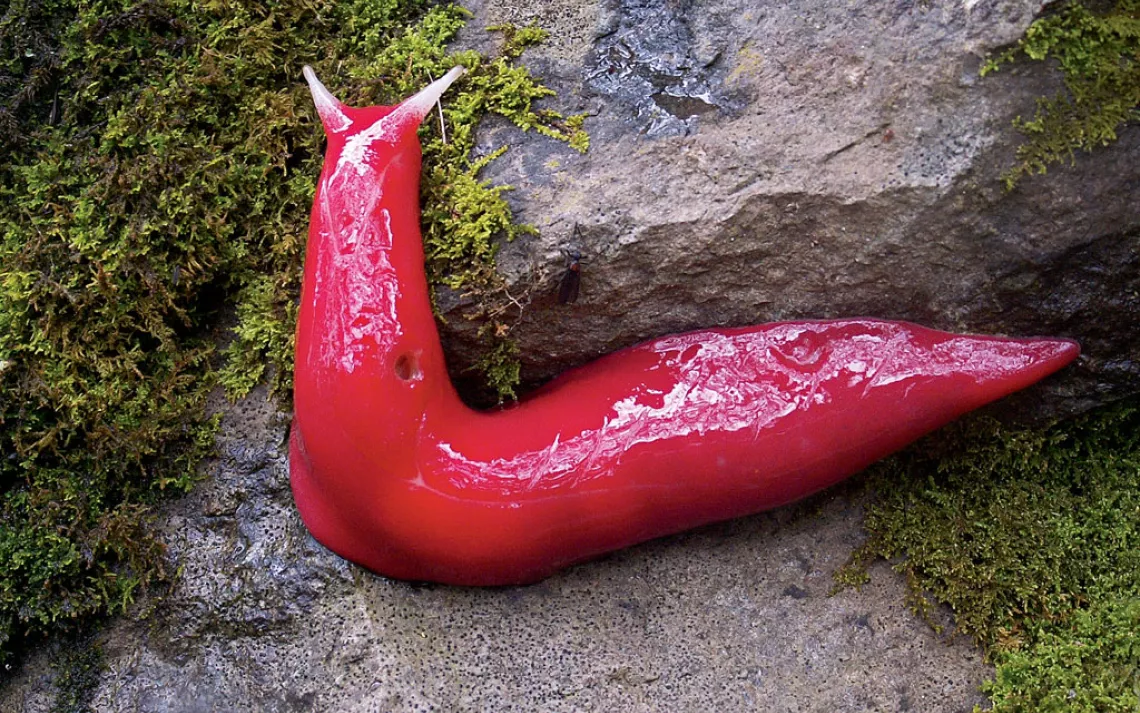Pretty in Pink
A slug with nothing to hide

Photo courtesy of M. Murphy/NPWS
Slugs generally ooze along the ground without attracting much attention. The pink slug, however, is difficult to miss: In addition to its shocking hue, it can grow to nearly eight inches long. You're unlikely to encounter one, though, unless you travel to the top of 4,947-foot Mt. Kaputar in Australia. So little research has been done on this mollusk that it doesn't even have a scientific name (although it is believed to be related to the red triangle slug, Triboniophorus graeffei). Pink slugs reside at the bottom of eucalyptus trees, which they climb at night to eat lichen from the bark. Their only known predators are carnivorous land snails, whose beltlike teeth scrape chunks of slug directly into their esophagi.
Australia was once covered by rainforest. As much of the continent drifted into desert latitudes, Mt. Kaputar maintained its subalpine habitat, in which the pink slug is only one of many endemic species. All are put at risk, however, by a changing climate. "This means that actions taken by people anywhere in the world to combat climate change can contribute to saving Mt. Kaputar's pink slug and unique land snail community," says Michael Murphy, a ranger with Australia's National Parks and Wildlife Services.
 The Magazine of The Sierra Club
The Magazine of The Sierra Club



